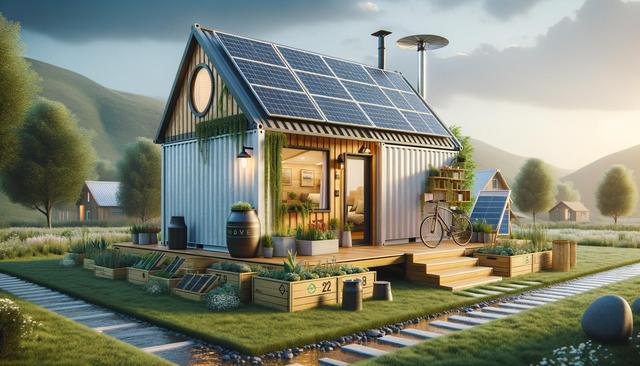The Rise of Container Homes
Container homes have quickly gained popularity as an innovative solution to modern housing challenges. Originally used to transport goods across oceans, steel shipping containers are now being repurposed into stylish, functional living spaces. The transformation of these industrial units into fully equipped homes reflects a growing trend toward sustainability and cost-effective construction. Their appeal lies in their ability to reduce waste, repurpose materials, and offer a unique aesthetic that aligns with minimalist and urban design principles.
This shift is driven by several key factors. First, the affordability of container homes compared to traditional housing options makes them accessible to a wider range of homeowners. Second, the environmental benefits of reusing containers contribute to a more sustainable construction process. Lastly, the speed of construction is significantly faster, as the basic structure is already in place. These advantages are helping container homes gain traction in both urban and rural settings.
Sustainability Through Design
One of the most compelling aspects of container homes is their contribution to sustainable living. By repurposing used shipping containers, builders reduce the demand for new raw materials and cut down on construction waste. Moreover, container homes are highly adaptable to green building practices, making it easier to incorporate energy-efficient systems and eco-friendly materials.
Many container homes embrace sustainable features such as:
- Solar panel systems for renewable energy
- Rainwater harvesting units for water conservation
- Natural insulation materials for improved energy efficiency
- Green roofs and vertical gardens that enhance biodiversity
These features not only reduce the carbon footprint of the home but also lower utility costs over time. Architects and designers are increasingly incorporating passive solar design principles, strategic window placement, and thermal mass techniques to maximize energy savings.
Affordability Without Compromise
Affordability is a major driving force behind the container home movement. Compared to conventional homes, building with shipping containers can significantly reduce construction and material costs. This makes it an appealing option for first-time homeowners, downsizers, and those seeking a more flexible lifestyle.
Despite their lower cost, container homes do not require a sacrifice in quality or comfort. Modern designs often include:
- Open-plan living spaces with high ceilings
- Customizable interiors tailored to individual preferences
- Durable finishes that withstand wear and weather
- Smart home technology integration
These features allow homeowners to enjoy a high standard of living at a fraction of the cost associated with traditional housing. Moreover, the modular nature of container homes means they can be expanded or reconfigured relatively easily, offering long-term flexibility.
Stylish and Functional Living
Container homes are not only practical—they’re also impressively stylish. The industrial-chic aesthetic of steel containers lends itself well to modern design trends. Large windows, exposed metal, and minimalist interiors create a contemporary look that appeals to design-conscious individuals.
Designers are finding creative ways to enhance the appearance and functionality of container homes, such as:
- Using cladding materials to soften the industrial look
- Incorporating multi-level layouts for added space
- Blending indoor and outdoor areas with large sliding doors
- Using interior design elements like reclaimed wood and polished concrete
These design choices result in homes that are both visually appealing and functionally efficient. The compact sizes also encourage decluttering and thoughtful organization, aligning well with minimalist living philosophies.
Challenges and Considerations
While container homes offer many benefits, they are not without challenges. One major consideration is ensuring proper insulation and ventilation. Steel containers can be susceptible to temperature fluctuations, so it’s crucial to apply appropriate insulation materials to maintain indoor comfort.
Other important factors include:
- Local building codes and zoning restrictions
- Structural modifications for doors, windows, and plumbing
- Corrosion treatment and waterproofing
- Transportation and placement logistics
Working with experienced architects and builders who understand the unique requirements of container construction can help mitigate these issues. Proper planning and consultation are essential to ensure safety, compliance, and long-term durability.
Conclusion: A Smart Choice for Modern Living
Container homes represent a practical and innovative solution for those seeking affordable, sustainable, and stylish housing. Whether you’re a first-time buyer, an eco-conscious individual, or someone looking to downsize without compromising on comfort or design, a container home can be a smart and forward-thinking choice. As technology and design approaches continue to evolve, container homes are likely to become an increasingly prominent part of the housing landscape—offering a unique blend of durability, efficiency, and modern appeal.




Leave a Reply